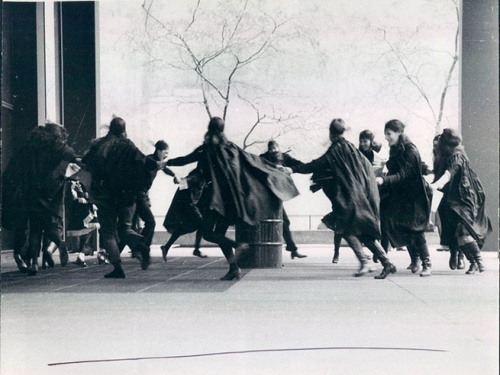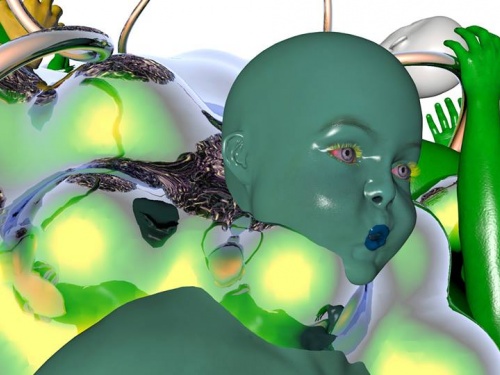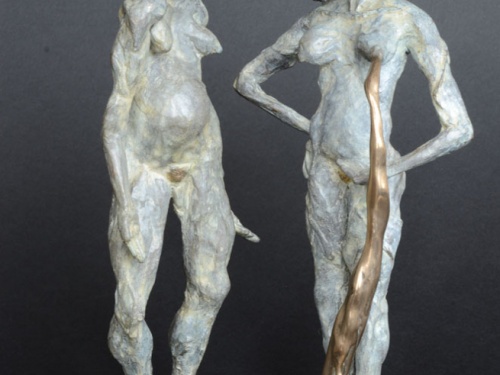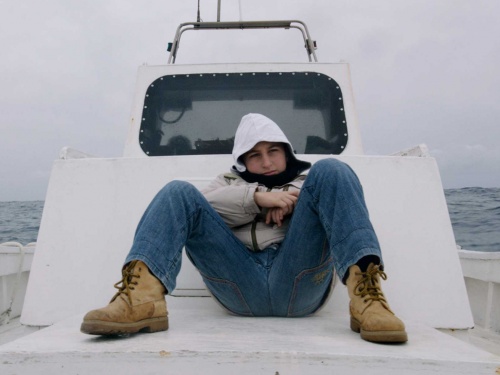TEXT2SPEECH: Hito Steyerl and the Politics of Art
The first of a new series of reading groups organised by the ICA Student Forum invited participants to read and contribute to a discussion about Hito Steyerl’s essay Politics of Art: Contemporary Art and the Transition to Post-Democracy (2010) at the ICA on 23 April 2014. The reading group has been organised to provide a forum for debate around an eclectic range of texts, with each meeting topically responding to a part of the ICA’s current programme. The group is free to join and open to all, encouraging anyone with an interest in contemporary art and theory to join either regularly or for one of the meetings.
ICA Student Forum member Jane Scarth has written an engaging summary of the April discussion for the ICA Blog.
In April, 17 people with a variety of perspectives joined in the discussion. We wanted to think about Steyerl’s use of language, the relationship between her films and writing, alternative systems of value and what, if anything, artists can contribute to improve these conditions.
This short yet provocative text introduces a number of significant questions. What is the social model of the ‘artist’ and how has it been constructed and subsequently exploited? What do we want or expect political art to do? Where next for institutional critique? How can we adequately address the conditions generated by the art market and the affective labour of people working in the arts?
If contemporary art is the answer, the question is, how can capitalism be made more beautiful?
Steyerl poses this question in her essay to provoke the reader’s conception of what contemporary art is and how it functions. We discussed how this type of address is typical of Steyerl’s style, using quips as a device in her writing. A member of the group brought attention to this quote as a personal challenge. How, if one is an artist, can you proceed to make work that ultimately operates in this way? It suggests that the role of contemporary art is pre-defined by the economy it enters into. As a result, in decentralising the artist it is in many ways a defeatist argument with no resolution. By thinking about how her argument is constructed, members of the group challenged how true this claim is in their experience. It was suggested that this only speaks for certain kinds of contemporary art, which are not defined by Steyerl.
The Global Guggenheim is a cultural refinery for a set of post-democratic oligarchies.
The term ‘post-democracy’ that is central to this text required some unpicking. One member challenged how it is possible to argue for the post-democratic when democracy was never truly obtained in the first place. The meaning of post-democracy is in fact not tied to the claim that democracy has been successful but it acknowledges the influence of corporations over governments, suggesting that certain governments can no longer claim to have the agency to act on behalf of the many. Reflected in this text, the wider industry of art (exemplified by the Global Guggenheim) is depicted as an unmanageable and ever expanding giant. Steyerl exposes how elite organisations such as this are considered powerful tools in the negotiation of state matters and for accumulating cultural capital in a globalised world.
This line of discussion led to a debate about alternative value systems. If we are to discuss the current state of politics, could we not consequently think about proposing genuine alternatives? To what extent can we envisage a new way of thinking, compared to how successfully we might be able to intervene in the status quo?
The traditional conception of the artist’s role corresponds all too well with the self-image of wannabe autocrats who see government potentially – and dangerously – as an art form.
Steyerl interrogates how the traditional model of artistic labour has been appropriated into a neoliberal ideal of power. To paraphrase, this figure is an autonomous agent, ‘unaccountable’ and guided by an idea that they are somehow creatively ‘genius’. We compared the relationship of this concept of the artist-as-economic-model to how Claire Bishop explores it in Artificial Hells: Participatory Art and the Politics of Spectatorship (2012). Citing Andrew Ross, Bishop argues that the ‘creative’ was promoted by New Labour in the UK as the ideal citizen-entrepreneur, ‘artists provide a useful model for precarious labour since they have a work mentality based on flexibility […] and honed by the idea of sacrificial labour’.
The inverse of this is represented by the new artist model Steyerl proposes – one she describes as a ‘strike worker’. We thought carefully about what this term means in the context of the essay and her work. It has a direct correlation to her text Is a Museum a Factory? in the same volume, and argues that, as affective labour, artists and art workers ‘churn out feelings, perception and distinction in all possible sizes and variations.’ We questioned what the alternative may be and if it is at all possible to escape this mode of artistic production, which many of the group identified with, either in making or viewing work today. The argument being that we may well make and receive art at the same speeds that we gather and disseminate information online.
This first reading group in our series raised more questions than could be answered and many of us continued to discuss the topics late into the evening. As a catalyst for debate it was a very thought-provoking evening and gave everyone a way to expand their thinking around Steyerl’s work and hopefully contextualise her exhibition at the ICA. ■
Join us for the second meeting of TEXT2SPEECH on Wednesday 18 June at 6.30pm, where we will be reading Florian Cramer’s text Sodom Blogging: “Alternative Porn” and Aesthetic Sensibility (2006).
The text discusses a potential history of online ‘Indie Porn’ and the politics of it as a supposedly alternative genre to mainstream pornography. It raises questions around the relationship of music, art and aesthetics to the development of this position as an outcome of the ongoing and ever-significant pornography debate within feminist discourse.
During the session we will ask questions such as: What are the significant differences between ‘artistic porn’ and ‘pornographic art’? Can these positions be resolved and can intervening pornographic representation ever truly operate as a tool for radical change?
This article is posted in: Events, Student Forum
Tagged with: Jane Scarth, TEXT2SPEECH, Hito Steyerl, Contemporary Art (Theory) Reading Group, Essay, politics





